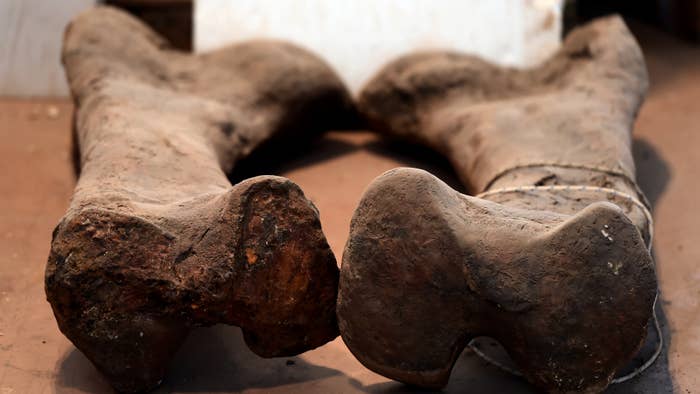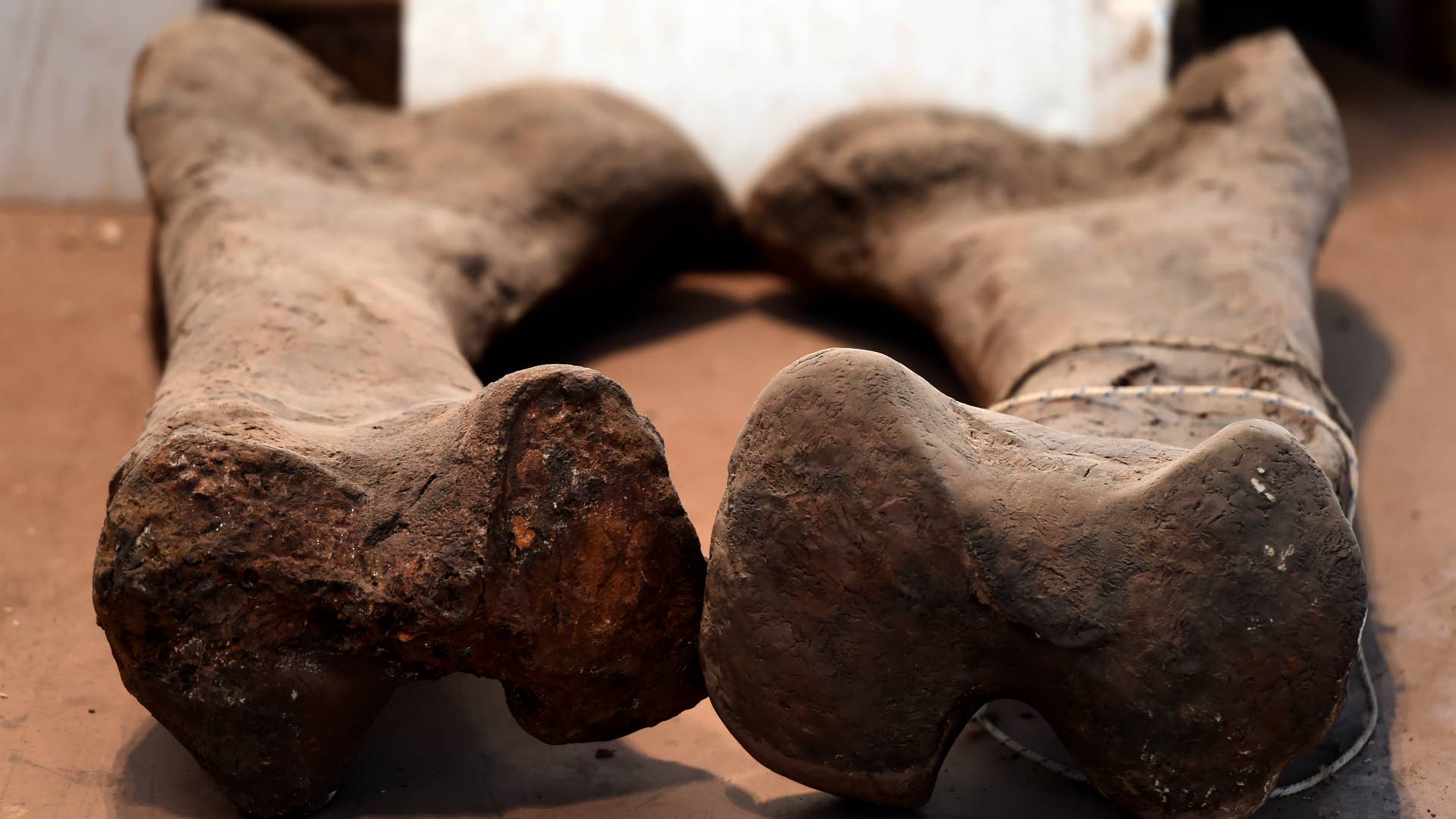
Paleontologists from the Queensland Museum and Eromanga Natural History Museum have confirmed the discovery of the largest dinosaur ever found in Australia, per NBC News.
Known as Australotitan cooperensis, this new species is believed to be a type of giant sauropod, which most notably had a long neck and tail and fed off of plants, measuring between 16 and 21 feet tall and as long as 98 feet, which is comparable to, but slightly longer than an NBA court. Researchers have determined that this latest discovery is closely related to three other sauropods—Diamantinasaurus, Savannasaurus, and Wintonotitan—from Australia that all roamed between 92 million to 96 million years ago.
“We found that Australotitan was the largest in the family, followed by Wintonotitan with big hips and long legs, whilst the two smaller sauropods, Diamantinasaurus and Savannasaurus were shorter in stature and heavily-set,” Scott Hocknull, paleontologist at Queensland Museum and author of the findings in the journal PeerJ, said in a statement.
The new species’ fossilized bones were initially found on a farm near the town of Eromanga in southwest Queensland in 2007. It was given the nickname “Cooper,” based on Cooper Creek, the area where the discovery was made. “It’s taken this long because it’s such a painstaking piece of work. You’ve got to take the bones out of the ground, you’ve got to prepare the fossils and then you’ve got to study them and compare them against all other species of dinosaurs worldwide,” Hocknell explained to ABC (Australian Broadcasting Corporation) News.
Researchers were assisted by newly-created 3D scanning technology that allowed them to scan the bones of the Australotitan and compare them to the fossils of similar species. “Discoveries like this are just the tip of the iceberg,” Hocknell said. “Our ultimate goal is to find the evidence that tells the changing story of Queensland, hundreds of millions of years in the making.”

